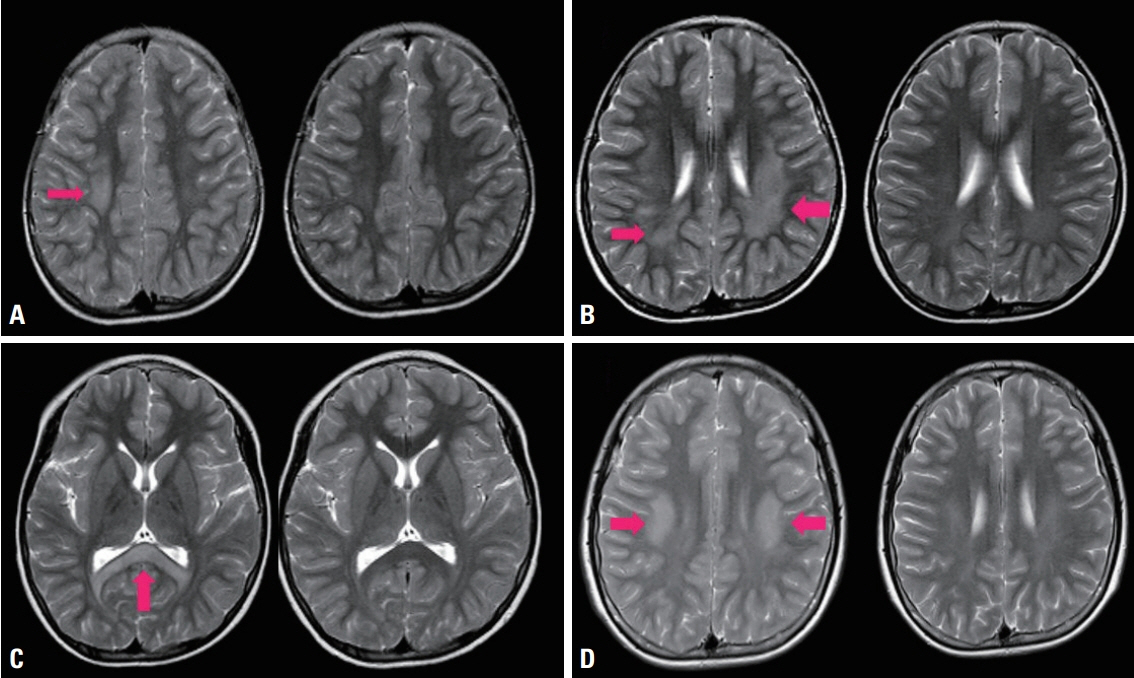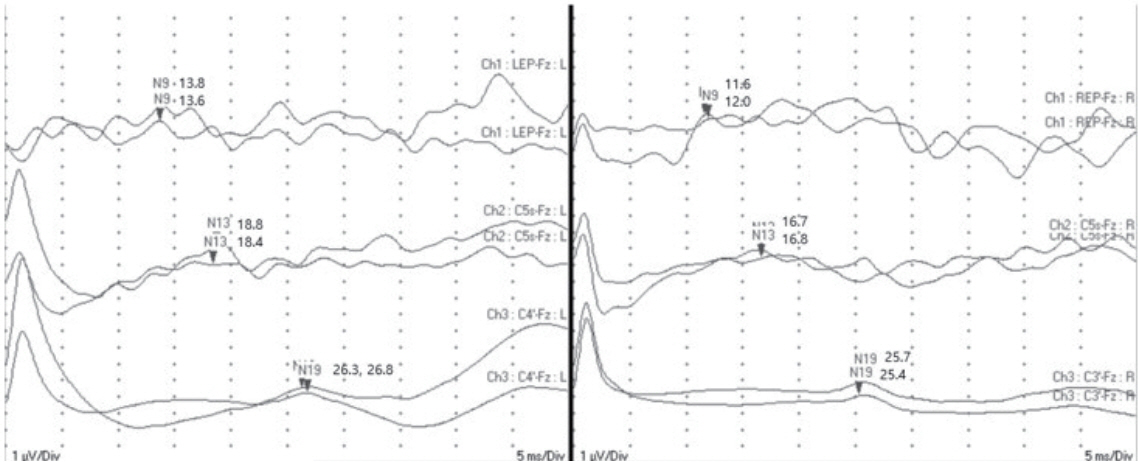Ann Clin Neurophysiol.
2021 Oct;23(2):130-133. 10.14253/acn.2021.23.2.130.
A case of X-linked Charcot-Marie-tooth disease type 1 manifesting as recurrent alternating hemiplegia with transient cerebral white matter lesions
- Affiliations
-
- 1Department of Neurology, Pusan National University Yangsan Hospital, Yangsan, Korea
- 2Department of Neurology, Bethesda Hospital, Yangsan, Korea
- KMID: 2521892
- DOI: http://doi.org/10.14253/acn.2021.23.2.130
Abstract
- X-linked Charcot Marie Tooth disease type 1 (CMTX1) is a clinically heterogenous X-linked hereditary neuropathy caused by mutation of the gene encoding gap junction beta 1 protein (GJB1). Typical clinical manifestations of CMTX1 are progressive weakness or sensory disturbance due to peripheral neuropathy. However, there have been some CMTX1 cases with accompanying central nervous system (CNS) manifestations. We report the case of a genetically confirmed CMTX1 patient who presented recurrent transient CNS symptoms without any symptom or sign of peripheral nervous system involvement.
Figure
Reference
-
1. Wang Y, Yin F. A review of X-linked Charcot-Marie-Tooth disease. J Child Neurol. 2016; 31:761–772.
Article2. Vazza G, Merlini L, Bertolin C, Zortea M, Mostacciuolo ML. A novel 9-bp insertion in the GJB1 gene causing a mild form of X-linked CMT with late onset. Neuromuscul Disord. 2006; 16:878–881.
Article3. Sargiannidou I, Vavlitou N, Aristodemou S, Hadjisavvas A, Kyriacou K, Scherer SS, et al. Connexin32 mutations cause loss of function in Schwann cells and oligodendrocytes leading to PNS and CNS myelination defects. J Neurosci. 2009; 29:4736–4749.
Article4. Al-Mateen M, Craig AK, Chance PF. The central nervous system phenotype of X-linked Charcot-Marie-Tooth disease: a transient disorder of children and young adults. J Child Neurol. 2014; 29:342–348.5. Lee MJ, Nelson I, Houlden H, Sweeney MG, Hilton-Jones D, Blake J, et al. Six novel connexin32 (GJB1) mutations in X-linked Charcot-Marie-Tooth disease. J Neurol Neurosurg Psychiatry. 2002; 73:304–306.
Article6. Kim JK, Han SA, Kim SJ. X-linked Charcot-Marie-Tooth disease with GJB1 mutation presenting as acute disseminated encephalomyelitis-like illness: a case report. Medicine (Baltimore). 2017; 96:e9176.
- Full Text Links
- Actions
-
Cited
- CITED
-
- Close
- Share
- Similar articles
-
- A Case Report of Neuronal Type of Charcot-Marie-Tooth Disease
- X-linked Charcot-Marie-Tooth disease case with a novel missense mutation in GJB1 gene
- A novel p.Leu699Pro mutation in MFN2 gene causes Charcot-Marie-Tooth disease type 2A
- Operative Treatment of Charcot-Marie-Tooth Disease
- X-linked Charcot-Marie-Tooth Disease Type 1 Harboring Unusual Electrophysiological Features



